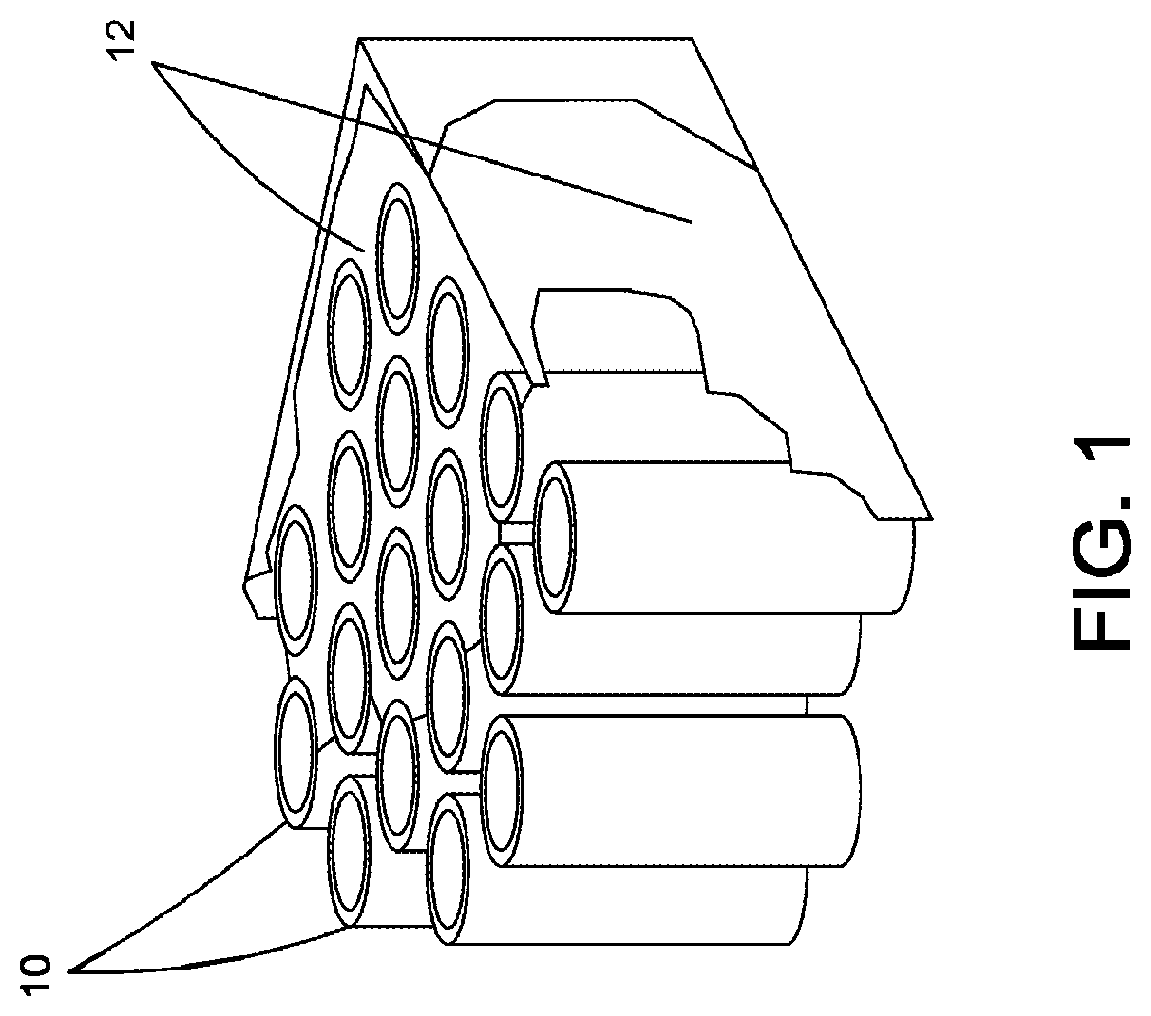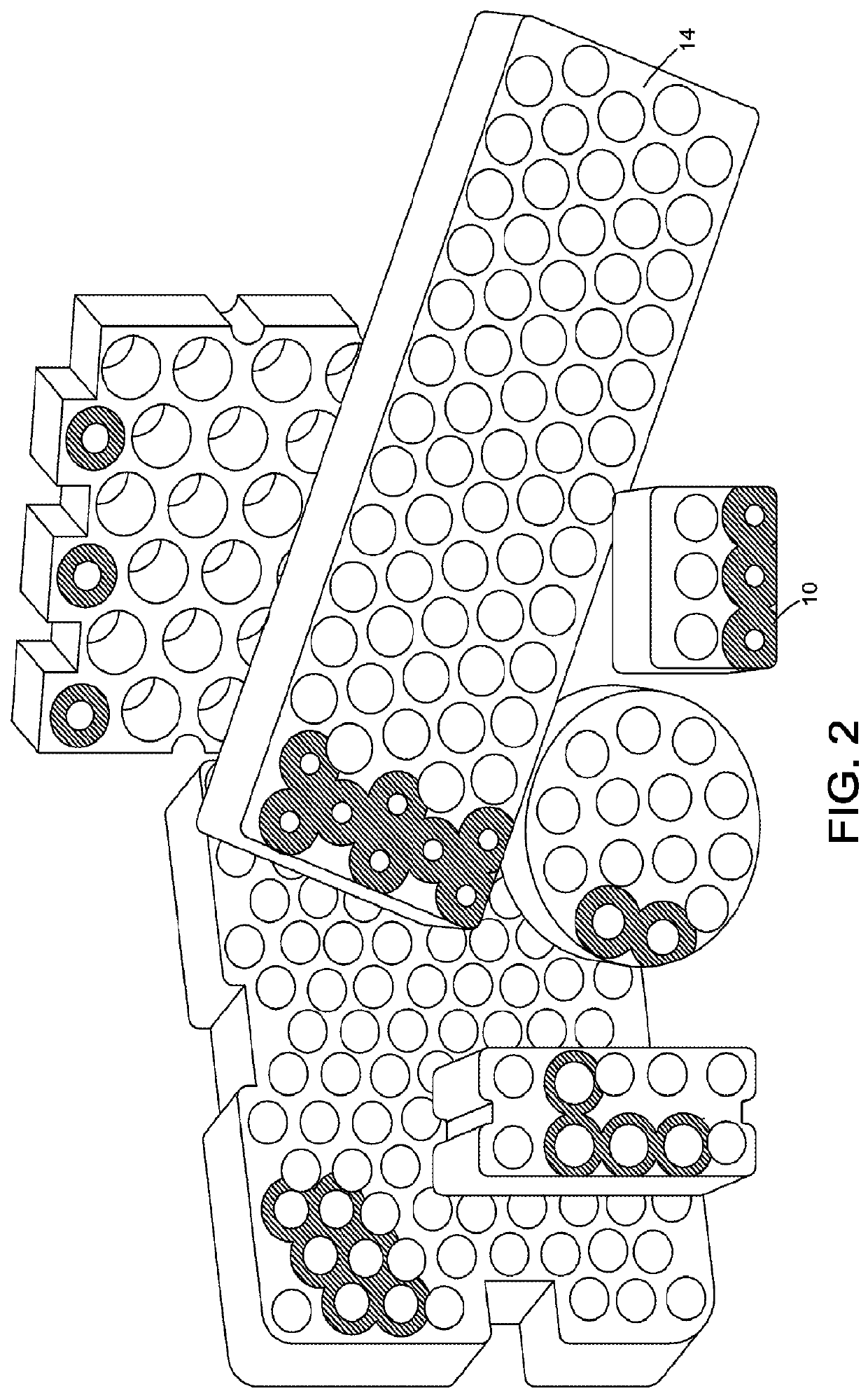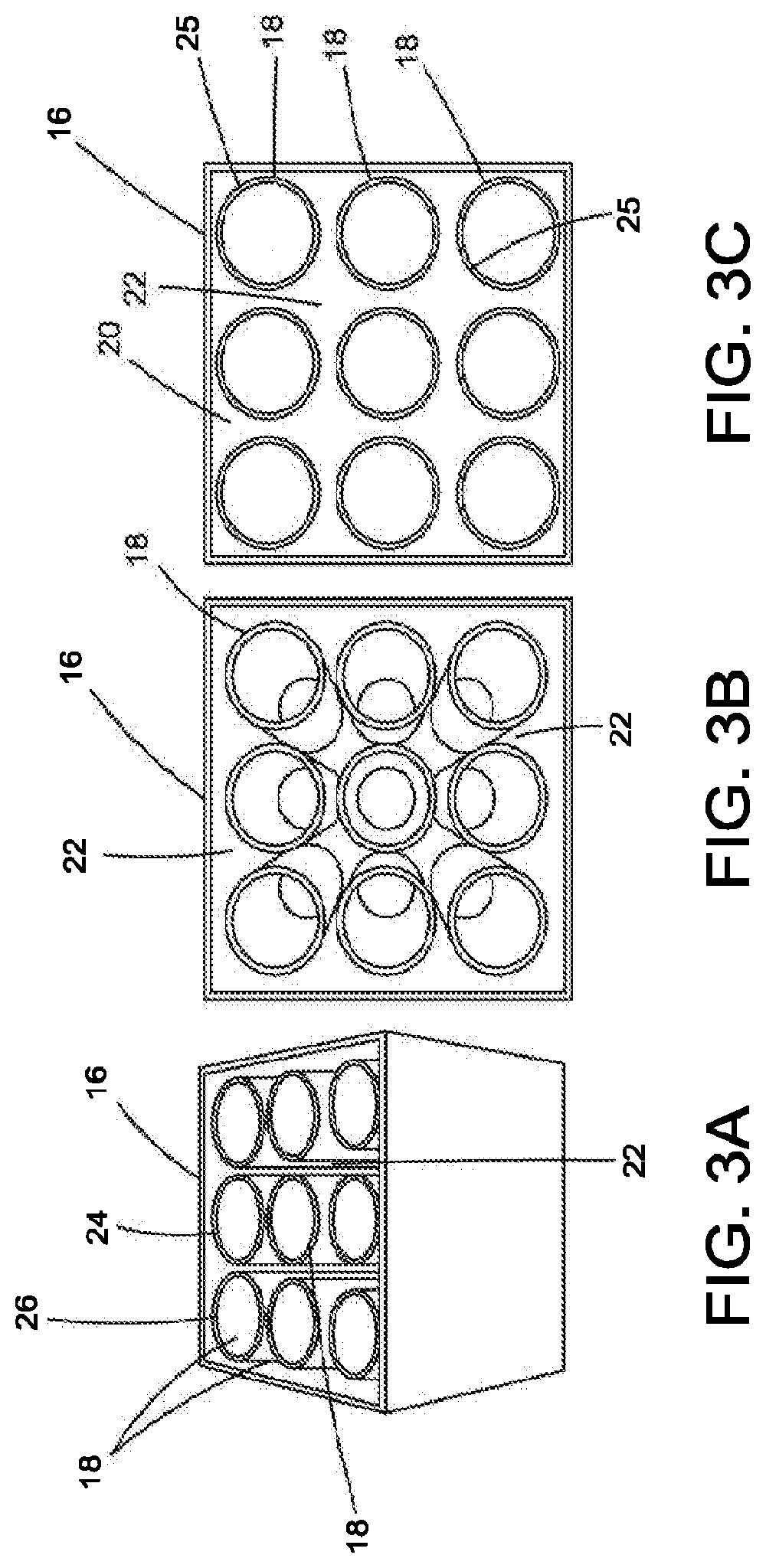Thermal management system and device
a technology of heat management system and heat producing device, which is applied in the direction of electrochemical generators, lighting and heating apparatus, cell components, etc., can solve the problems of limiting the performance of devices, limiting the performance in this manner, and insufficient cooling capacity of existing state-of-art technologies without increasing footprint, so as to reduce thermal aging and reduce the power output of an energy storage devi
- Summary
- Abstract
- Description
- Claims
- Application Information
AI Technical Summary
Benefits of technology
Problems solved by technology
Method used
Image
Examples
example 1
for Fabrication of the Novel PCM Composite
[0310]Different materials were used to fabricate the novel PCM composite. A novel PCM composite may include at least two or three different materials to serve the key functions of heat storage, heat dissipation and prevent PCM leakage.
[0311]The first material of the PCM composite included PCM which is capable of absorbing heat released by a heat source. The PCM was chosen from organic and inorganic materials having a melting temperature in a range from about 20° C. to 100° C. depending on the application.
[0312]In some instances, the PCM was used in its unadulterated form, as a microencapsulated PCM (e.g., a fine PCM powder consisting of a polymer coating to prevent PCM leakage) or a macro-encapsulated PCM (e.g., encapsulated with porous materials like graphite powder, expanded graphite flakes, carbon black, carbon nanotubes).
[0313]PCMs were also made in the form of pastes or slurries by mixing with high thermal conductivity filler materials ...
example 2
on Strategies of the Multilayer PCM Composite Material
[0321]There are few ways to fabricate the thin PCM composite material as described in the following section. The main objective is to create thin PCM composite material that has high thermal conductivity for heat dissipation applications.
[0322]The following two steps have been used to manufacture a PCM composite structure using expanded graphite. In particular, a thermally conductive porous structure was constructed from expanded graphite and filled with PCM.
[0323]Preparation of Thermally Conductive Porous Structure Using Expanded Graphite
[0324]Andrew Mills et al (Mills) describe in great detail the manufacture of PCM composite material using expanded graphite fibers. (“Thermal conductivity enhancement of phase change materials using a graphite matrix” Applied Thermal Engineering, Volume 26, Issues 14-15, October 2006, Pages 1652-1661). Expanded graphite fibers were used as a starting raw material and compressed to a known densit...
example 3
on Method #1
[0330]In the first invention concept, the EG-PCM composite material 2700 was cut into thin sheets with thickness of less than 2 mm. The thin sheet of EG-PCM composite material 2700 was compressed into the pores of support element 2704, for example, a thin graphite / carbon paper and / or graphite / carbon cloth (i.e., paper or cloth commonly used in fuel cell applications as gas diffusion layer) under external compression load and heat as required to form composite material 2715. This operation was done in a compression mold. Alternatively, a single roller or double roller may be used for the compression. A series of rollers may also be used similar to a paper making process to achieve the desired final thickness by varying the compaction or roller force on the composite material. The EG-PCM material was preheated to a softening point prior to compression. The EG-PCM may be heated prior to and / or during compression. Softened material may easily be pressed into the pores of the...
PUM
| Property | Measurement | Unit |
|---|---|---|
| melt temperature | aaaaa | aaaaa |
| thickness | aaaaa | aaaaa |
| temperature | aaaaa | aaaaa |
Abstract
Description
Claims
Application Information
 Login to View More
Login to View More - R&D
- Intellectual Property
- Life Sciences
- Materials
- Tech Scout
- Unparalleled Data Quality
- Higher Quality Content
- 60% Fewer Hallucinations
Browse by: Latest US Patents, China's latest patents, Technical Efficacy Thesaurus, Application Domain, Technology Topic, Popular Technical Reports.
© 2025 PatSnap. All rights reserved.Legal|Privacy policy|Modern Slavery Act Transparency Statement|Sitemap|About US| Contact US: help@patsnap.com



